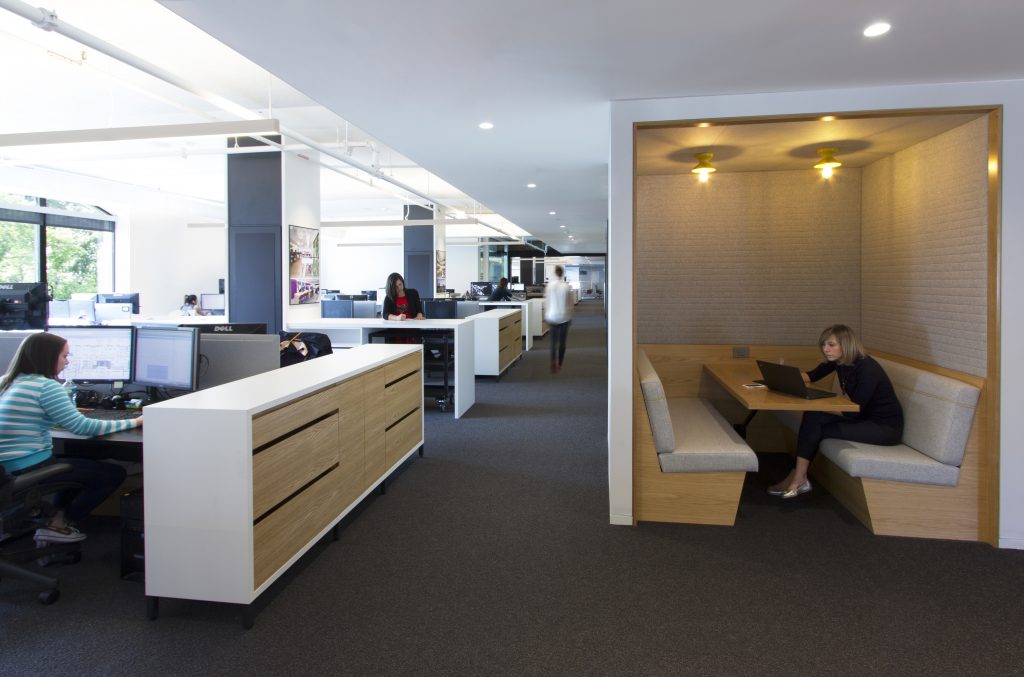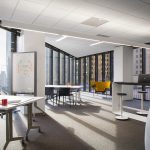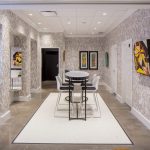How Architects Retain Clients by Boosting ROI

Satisfied clients are ones that return again and again to do business with you. For most businesses, retaining clients is easier than acquiring new ones and to keep you clients, you need to deliver results. In architecture, client retention means going beyond drawing beautiful buildings and aligning your designs to your clients’ strategic priorities.
Priorities will vary by client, but common themes include profitability, energy efficiency and occupant satisfaction. Clients expect you to create beautiful buildings, but if you can design aesthetically pleasing buildings that are also highly functional, you’ll deliver a lot of value to clients and keep them coming back.
A key way you can differentiate your firm from the competition in your clients’ minds is to frame discussions around building function and occupant experience. Recent research by the American Institute of Architects (AIA), bears this out.
Building owners top concern: occupant satisfaction
According to the AIA Business of Architecture 2016 Firm Survey Report, 58 percent of commercial building owners want architects to take the performance of buildings and impact on occupants into account. In terms of commercial building occupants, owners are becoming quite attuned to occupant satisfaction, with 90 percent rating safety and thermal comfort very important.
Buildings are assets and owners want their assets to be profitable. Nine-in-ten building owners rank increasing ROI on their buildings as very important.
A key factor in meeting owner expectations for building profitability and occupant satisfaction is a building’s lighting. Modern LED lighting solutions significantly increase the value of buildings by reducing energy costs, offering unprecedented controllability and boosting employee productivity.
Energy efficiency
LEDs are well known for their energy-sipping ways, especially when compared to legacy light sources. The reason has to do heat: legacy light sources are essentially heaters that give off light as a byproduct of producing heat. Fluorescent lights turn about 80 percent of the energy consumed into heat. LEDs use the same 20 percent of the energy to create light without the heat waste.
Put another way, if it costs a client $100 to illuminate a space with conventional lighting, they are paying $80 to heat the room and $20 to light it. If your design replaces the conventional lighting with LEDs, they would pay the same $20 to light the space, but the $80 wasted as heat is saved.
All that heat emitted by conventional lighting can also increase air conditioning costs, as A/C systems run more to cool spaces warmed from hot lights. Installing LED lighting in new projects or upgrading during renovations can deliver huge savings to clients over the lifetime of their buildings.
Complete controllability
LEDs have more control options than any light source before them. With the right controls, your clients can adjust their LED lighting any way they want, dimming them, controlling them wirelessly and even color tuning them to mimic the sun throughout the day. Occupancy sensors can further improve a building’s energy efficiency.
Daylight harvesting is another option. Also called “daylighting,” daylight harvesting dims interior lighting in a space when the ambient natural light is sufficient or when the space is unoccupied.
It’s important to choose LEDs that are compatible with current controls. LED solutions from Amerlux are compatible with all the control systems currently on the market, so building owners can enjoy the benefits of state-of-the-art controls and full analytics dashboards.
Better light for better productivity
Energy efficiency is important, for building occupants, the real savings comes from employee productivity. LED lighting can have dramatic impacts on employees’ health and productivity.
One study from the International Journal of Industrial Ergonomics—comparing fluorescent and LED lighting—found an 8.3 percent performance improvement in visual and cognitive tasks. The same study found employees working under LED lighting had faster reaction times, reduced fatigue and increased activity.
An Indoor and Built Environment study found significant productivity increases and a boost in employee morale from the marriage of LED lighting and natural sunlight in facilities that use daylighting techniques.
The “3/30/300” rule is helpful to put these studies in perspective: Developed by commercial real estate firm, Jones Lang LaSalle, the 3/30/300 rule states that companies typically spend $3 per square foot on utilities, $30 for rent and $300 on employees.
If the building is 15,000 square feet, then the occupant is probably spending around $45,000 on utilities, $450,000 on rent and $4,500,000 on employees. (The total amount adds up to $4,995,000).
Reducing energy costs by 50 percent would saves the tenant $22,500 annually. Improve space utilization by 10 percent and the tenant saves $45,000. Increase employee productivity by 5 percent and the company saves $225,000. A small change in the employee category can have a huge impact on a building tenant’s bottom line.
More valuable space
LED lighting in a building makes the space more valuable, meaning your clients can lease it for higher rates. Or, if the building owners are also the occupants, they benefit from the energy savings and employee productivity gains.
Using LED lighting in your designs is an effective way of increasing functionality and performance for your clients’ projects, which will keep them coming back to you in the future.
Learn how Amerlux’s elegant lighting solutions improve spaces, lower energy bills and add a touch of panache to projects.

